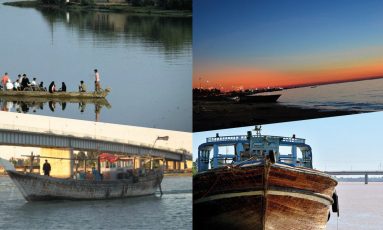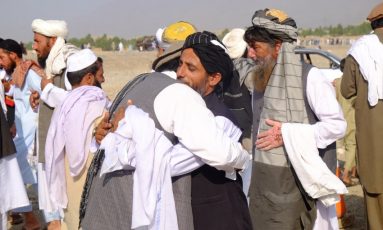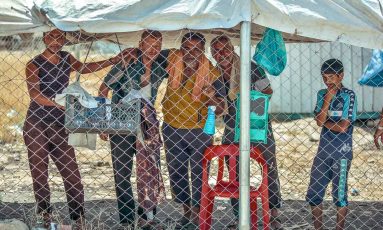Our Research
Read our results from donor-funded and in-house research and development projects. Seefar’s research aims to understand the best responses to challenges that impact vulnerable people. Below are some of our research publications. Not all of our research is published, but you can request unpublished reports and a briefing on any of our research reports here.
The Asylum Coalition Index (ACI) uses machine learning to group European governments according to shared priorities on irregular migration and asylum. By identifying where two or more European countries share an origin country of concern, governments have the information they need to build strategic partnerships.The ACI is created using an automated tool called “k-means clustering.” … Using Machine Learning to build an Asylum Coalition Index Read More »
Forced labour affects almost 25 million people globally. Migrant workers, and particularly overseas domestic workers, are vulnerable to exploitation at the hands of recruiters and employers due to a range of legal, cultural, social and economic factors. Since 2015, Seefar has been conducting a large-scale research project, funded by the Macquarie Group Foundation. The research aims to … Understanding forced labour amongst migrant domestic workers in Asia Read More »
Modern slavery is a global issue deeply connected to labour migration. Migrants and those pursuing work abroad are often at risk of financial, emotional and physical exploitation. Overseas domestic workers are particularly vulnerable because they live and work in private households. In Indonesia, prospective female domestic workers face acute risks early on in their migration planning but … Who are the most vulnerable Indonesian prospective migrants? Read More »
For more than four years, we have been interviewing a panel of Iranians planning and executing irregular migration. Our latest report is Refugee Integration in Europe: Life and other Plans among Iranian Irregular Migrants Settling in Europe. More than 25% of the people we found in Iran with a plan to migrate irregularly in 2014 have now …
European Union cooperation with Turkey and Libya and the family separation crisis in the United States show global failures in reconciling ‘tough’ border policies with every child’s right to live free from violence and exploitation. Many child protection measures in Western destination countries do not address children’s needs before or during difficult journeys. Effective and … Supporting the choices of irregular child migrants Read More »
Millions of refugees and migrants have returned to Afghanistan since 2012. Most come from neighbouring countries, driven out by protection concerns, fears of deportation, economic difficulty and integration challenges. In the European Union (EU), asylum recognition rates for Afghans are falling; in Turkey and the Western Balkans, expanded immigration enforcement and harsh conditions drive movements both onwards … Distant Dreams: Understanding the aspirations of Afghan returnees Read More »
The biggest repatriation project in recent history is occurring with the forced exodus of millions of Afghan refugees from Pakistan and Iran, and failed Afghan asylum seekers returning from Europe. To better understand the challenges returning Afghans face, as well as the emotional and psychosocial impacts of return and reintegration for returning migrants and hosting … Examining Return and Reintegration in Afghanistan: Why Psychosocial Interventions Matter Read More »
Iran has been out of the public eye as EU decision-makers focus attention and money on more significant regions of origin of irregular migration. Yet Iran, previously a major source of irregular migration to Australia, has consistently been a source of asylum applicants in Germany, the UK, and elsewhere in the EU. We cannot predict … Windows of opportunity: Iranian irregular migration and return 2014-2016 Read More »
In the ecosystem of international efforts against human trafficking and modern slavery, there is a plague of recommendations. Some are intelligent recommendations, which are hard to follow among the noise. Some are less intelligent recommendations, adding to the din without illuminating opportunities. Many are irrelevant, ill-conceived or ignored. The industry has reached a stage of … Recommendations from the US Trafficking in Persons Report – What’s the point? Read More »
Interested in working with us?
Become one of our supporters and help us achieve our mission and vision








